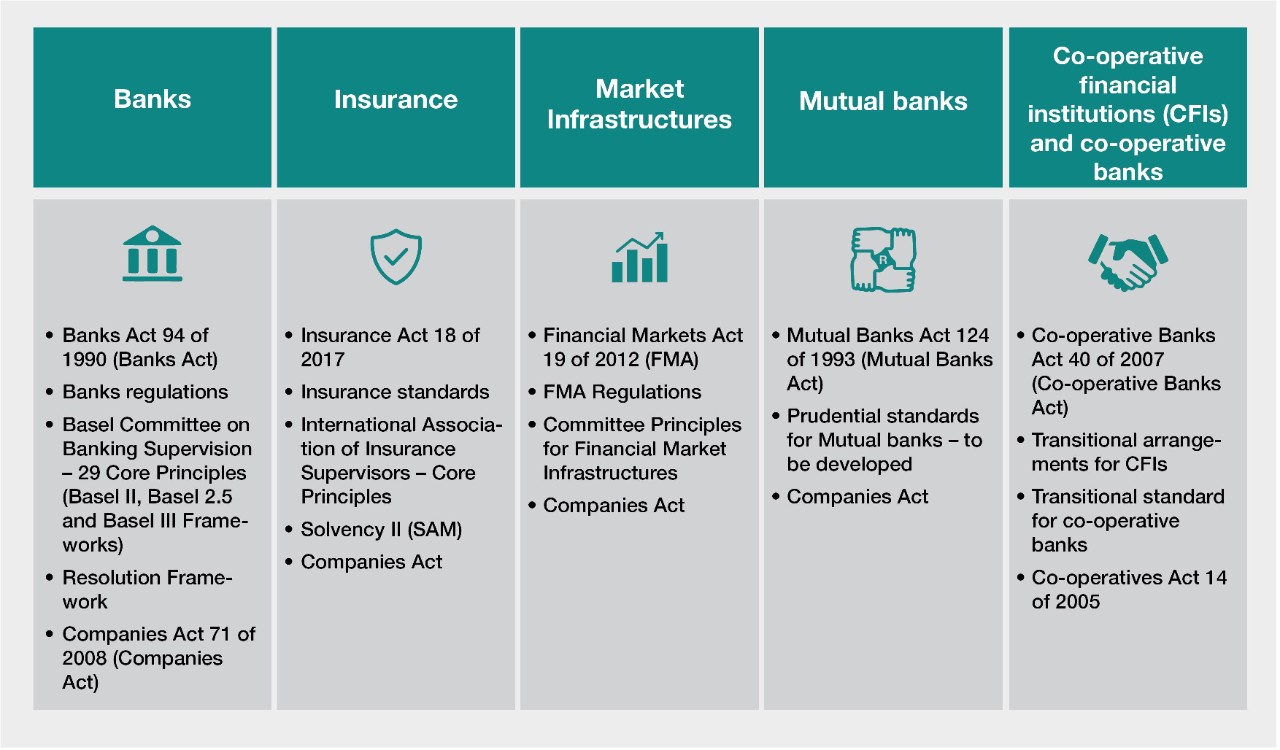

Finance
What Is Banking Regulation E?
Modified: March 1, 2024
Learn about Banking Regulation E and how it impacts the finance industry. Understand the key provisions and consumer rights under this important financial regulation.
(Many of the links in this article redirect to a specific reviewed product. Your purchase of these products through affiliate links helps to generate commission for LiveWell, at no extra cost. Learn more)
Table of Contents
Introduction
Banking Regulation E, also known as Regulation E or Reg E, is a set of rules and regulations established by the Consumer Financial Protection Bureau (CFPB) in the United States. It provides important protections to consumers when it comes to electronic fund transfers (EFTs) and other electronic banking transactions.
Regulation E was implemented to ensure that consumers have clear and comprehensive information about their rights and responsibilities when using electronic banking services, such as ATMs, debit cards, and online transfers. It sets guidelines for financial institutions to follow in order to protect consumers from fraudulent activities and unauthorized transactions.
This comprehensive regulatory framework covers a wide range of important aspects, including electronic fund transfer disclosures, error resolution procedures, limitations on liability, recordkeeping requirements, and enforcement mechanisms. By understanding and complying with these regulations, banks and other financial institutions can uphold the highest standards of customer service and transparency.
The purpose of this article is to provide a comprehensive overview of Banking Regulation E, its key provisions, and the consumer protections it offers. By diving into the details of this regulation, consumers can feel more confident and empowered in their banking experiences, knowing that their rights and interests are protected.
Overview of Banking Regulation E
Banking Regulation E sets forth the requirements that financial institutions must adhere to in order to protect consumers who engage in electronic fund transfers (EFTs) and other electronic banking transactions. It covers a wide range of banking activities, including ATM withdrawals, debit card transactions, direct deposits, and online transfers.
One of the main objectives of Regulation E is to ensure that consumers receive clear and accurate information about their rights and responsibilities when engaging in electronic banking transactions. Financial institutions are required to provide customers with specific disclosures, outlining the terms and conditions of the electronic funds transfer services they offer.
Under Regulation E, consumers have the right to know the fees associated with their electronic banking transactions, as well as any limitations or restrictions placed on their accounts. Financial institutions must provide this information in a clear and conspicuous manner, allowing customers to make informed decisions about their banking activities.
Moreover, Regulation E establishes guidelines for error resolution procedures. If a consumer notices an error in their electronic banking transaction, such as an unauthorized withdrawal or an incorrect amount, they have the right to dispute the error and request a resolution. Financial institutions must investigate consumer complaints promptly and resolve them within defined timeframes.
Another important aspect of Regulation E is that it limits the liability of consumers in cases of unauthorized transactions. If a consumer promptly reports the loss or theft of their debit card or other access device, their liability for unauthorized transactions is generally limited to $50. If the loss or theft is not reported promptly, the consumer’s liability may increase.
Furthermore, Regulation E imposes recordkeeping requirements on financial institutions. They must retain documentation related to electronic fund transfers for a certain period of time and make it available to consumers upon request. This helps ensure that there is a transparent trail of electronic transactions and facilitates the resolution of any disputes that may arise.
Overall, Banking Regulation E plays a vital role in safeguarding the rights and interests of consumers engaging in electronic banking transactions. It promotes transparency, provides clear guidelines for dispute resolution, and establishes liability protections for unauthorized transactions. By understanding the provisions of Regulation E, consumers can make informed decisions and feel confident in their electronic banking activities.
Key Provisions of Banking Regulation E
Banking Regulation E contains several important provisions that aim to protect consumers and ensure transparency in electronic fund transfers and other electronic banking transactions. Understanding these key provisions is essential for consumers to know their rights and responsibilities when engaging in electronic banking activities.
1. Disclosure Requirements: Financial institutions are required to provide consumers with clear and concise electronic fund transfer disclosures. These disclosures include information about fees, transaction limits, and other terms and conditions associated with electronic banking services. This allows consumers to make informed decisions about their banking activities and understand the costs involved.
2. Error Resolution Procedures: Regulation E outlines specific procedures for resolving errors in electronic fund transfers. If a consumer notices an error in their electronic transaction, such as an unauthorized withdrawal or an incorrect amount, they have the right to dispute the error. Financial institutions must promptly investigate and resolve these errors, providing consumers with a timely resolution.
3. Limitations on Liability: Banking Regulation E provides protection for consumers in cases of unauthorized transactions. If a consumer promptly reports the loss or theft of their access device, such as a debit card or PIN, their liability for unauthorized transactions is generally limited to $50. However, if the loss or theft is not reported promptly, the consumer’s liability may increase.
4. Recordkeeping Requirements: Financial institutions are obligated to maintain records of consumers’ electronic fund transfers. These records must be kept for a specified period of time and be made available to consumers upon request. This ensures that there is a transparent trail of electronic transactions and helps resolve any disputes that may arise.
5. Preauthorized Transfers: Regulation E includes specific provisions regarding preauthorized electronic transfers, such as recurring payments or direct deposits. Consumers have the right to stop these preauthorized transfers by contacting the financial institution before the scheduled transfer date. If a consumer requests a stop payment at least three business days before the scheduled transfer, the financial institution must comply.
6. Electronic Statements: Financial institutions must provide consumers with periodic statements for their electronic fund transfer accounts. These statements contain information about transactions, fees, and other account details. Consumers should carefully review these statements and report any errors or discrepancies to their financial institution promptly.
7. Enforcement and Compliance: The Consumer Financial Protection Bureau (CFPB) is responsible for enforcing Banking Regulation E. Financial institutions found to be in violation of the regulation may face penalties and fines. Consumers can file complaints with the CFPB if they believe their rights under Regulation E have been violated.
By familiarizing themselves with these key provisions of Banking Regulation E, consumers can better understand their rights, responsibilities, and the protections in place for their electronic banking transactions. It is important for consumers to review and keep a record of the disclosures provided by their financial institution and promptly report any errors or unauthorized transactions to ensure their rights are protected.
Consumer Protections under Banking Regulation E
Banking Regulation E provides important protections for consumers engaging in electronic fund transfers (EFTs) and other electronic banking transactions. These protections are designed to ensure transparency, safeguard consumer rights, and mitigate the risks associated with electronic banking activities.
One of the primary consumer protections under Regulation E is the requirement for financial institutions to provide clear and comprehensive disclosures. These disclosures outline the terms and conditions of electronic banking services, including information about fees, transaction limits, and other important details. By receiving this information upfront, consumers can make informed decisions about their banking activities and be aware of the costs associated with electronic transactions.
In the case of errors or unauthorized transactions, Regulation E establishes procedures to ensure prompt resolution. Consumers have the right to dispute and report any errors or unauthorized transactions to their financial institution. Upon receiving a complaint, the financial institution is obligated to investigate and resolve the issue within specified timeframes. This protection gives consumers peace of mind, knowing that their concerns regarding errors or unauthorized transactions will be addressed in a timely manner.
Moreover, Regulation E places limitations on consumer liability for unauthorized transactions. If a consumer promptly reports the loss or theft of their access device, such as a debit card, their liability is generally limited to $50. This helps protect consumers from substantial losses if their access devices are lost or stolen, encouraging them to promptly report any incidents and minimize potential damages.
Another important consumer protection provided by Regulation E is the right to receive periodic statements for electronic fund transfer accounts. These statements contain detailed information about transactions, fees, and other account details. By reviewing these statements, consumers can ensure that all transactions are accurate and report any discrepancies or errors to their financial institution in a timely manner.
Additionally, Regulation E grants consumers the right to stop preauthorized electronic transfers. For example, if a consumer has set up recurring payments or direct deposits, they have the ability to stop these transfers by contacting their financial institution before the scheduled transfer date. This empowers consumers to have control over their electronic banking activities and easily manage their finances.
The enforcement and compliance of Banking Regulation E is overseen by the Consumer Financial Protection Bureau (CFPB). This regulatory body ensures that financial institutions comply with the provisions of Regulation E and investigates any consumer complaints related to violations. This enforcement mechanism helps maintain accountability and ensures that consumers’ rights are upheld.
Overall, the consumer protections provided by Banking Regulation E are crucial for ensuring a fair and secure electronic banking environment. By understanding these protections, consumers can navigate electronic fund transfers and other electronic banking transactions with confidence, knowing that their rights are protected and that there are mechanisms in place to address any issues that may arise.
Electronic Fund Transfer Disclosures
Electronic fund transfer (EFT) disclosures, as mandated by Banking Regulation E, play a vital role in providing consumers with essential information about their rights and responsibilities when engaging in electronic banking transactions. These disclosures are intended to ensure transparency and enable consumers to make informed decisions regarding their electronic fund transfers.
Financial institutions are required to provide clear and comprehensive EFT disclosures to their customers. These disclosures outline the terms and conditions of the electronic banking services offered by the institution. They include information such as fees, transaction limits, withdrawal restrictions, and any other relevant details pertaining to electronic transactions.
The purpose of these disclosures is to ensure that consumers have a complete understanding of the costs and limitations associated with their electronic fund transfers. This enables them to make informed decisions about their banking activities and helps prevent any unexpected charges or inconveniences.
Financial institutions are required to provide EFT disclosures both before a consumer opens an account for electronic fund transfers and on an ongoing basis. The initial disclosure is typically provided at the time of account opening, allowing consumers to review and understand the terms before engaging in any electronic transactions.
Ongoing EFT disclosures, also known as periodic statements, are provided to consumers on a regular basis. These statements contain detailed information about the consumer’s electronic fund transfers, including the date, amount, and description of each transaction. Additionally, they include any fees or other charges associated with the transfer.
When providing EFT disclosures, financial institutions must ensure that the information is presented in a clear and conspicuous manner. The disclosures should be easy to understand and readily accessible to consumers. This allows consumers to easily locate and review the necessary information regarding their electronic fund transfers.
It is important for consumers to carefully review their EFT disclosures and periodically check for any updates or changes. Financial institutions are obligated to notify consumers in advance of any changes to the terms and conditions that may affect their electronic fund transfers. This gives consumers an opportunity to assess these changes and make informed decisions about their continued use of electronic banking services.
By providing EFT disclosures, financial institutions establish a transparent framework for electronic fund transfers, ensuring that consumers have access to crucial information about their banking activities. By reviewing and understanding these disclosures, consumers can make informed decisions, manage their finances effectively, and avoid any surprises or misunderstandings related to their electronic transactions.
Error Resolution Procedures
Error resolution procedures, as outlined in Banking Regulation E, are designed to protect consumers who encounter errors or unauthorized transactions in their electronic fund transfers (EFTs). These procedures establish a clear framework for resolving disputes and ensuring that consumers are provided with a timely and fair resolution.
If a consumer identifies an error or unauthorized transaction in their electronic banking activity, Regulation E provides them with the right to dispute and report the issue to their financial institution. The financial institution is then required to promptly investigate and resolve the error or unauthorized transaction.
Financial institutions must provide consumers with a specific timeframe within which they are expected to report errors or unauthorized transactions. Generally, this timeframe is 60 days from when the relevant account statement is sent to the consumer. However, if the error involves an unauthorised transaction, such as theft of a debit card, there may be additional time for reporting.
Upon receiving a consumer complaint, the financial institution must initiate an investigation into the disputed transaction. During the investigation, the financial institution is obligated to temporarily credit the consumer’s account for the disputed amount, ensuring that the consumer does not suffer any financial loss during this process.
Within a specified period of time, typically 10 business days, the financial institution must either resolve the dispute in favor of the consumer or provide a provisional credit to the consumer’s account. If further investigation is required, the financial institution has up to 45 additional days to resolve the dispute, provided that it notifies the consumer of the reason for the delay.
If the financial institution determines that no error occurred or that the consumer should be responsible for the disputed transaction, it must provide a written explanation to the consumer, along with any supporting documentation. Consumers have the right to request copies of documents related to the investigation, allowing them to review the evidence and understand the basis for the financial institution’s decision.
If the dispute remains unresolved after the investigation, consumers have the right to seek further recourse. They can file a complaint with the Consumer Financial Protection Bureau (CFPB) or pursue legal action to address the issue.
It is important for consumers to promptly report any errors or unauthorized transactions and provide all necessary information to their financial institution during the dispute resolution process. This ensures a smooth and efficient resolution and helps protect consumer rights and interests.
By establishing error resolution procedures, Banking Regulation E aims to provide consumers with a fair and transparent process for resolving disputes related to their electronic fund transfers. These procedures safeguard consumer interests and provide a mechanism for consumers to address any errors or unauthorized transactions that may occur during their electronic banking activities.
Limitations on Liability
Banking Regulation E provides important limitations on liability for consumers engaging in electronic fund transfers (EFTs) to protect them from financial losses in cases of unauthorized transactions. These limitations are in place to ensure that consumers are not held fully responsible for unauthorized activity and encourage prompt reporting of lost or stolen access devices.
If a consumer promptly reports the loss or theft of their access device, such as a debit card or PIN, their liability for unauthorized transactions is generally limited to $50. This means that, in most cases, consumers are only responsible for a minimal amount if unauthorized transactions occur before they report the loss or theft.
However, it is essential for consumers to be aware of the specific reporting requirements and timeframes outlined by their financial institution. Different institutions may have varying policies, and it is crucial for consumers to understand these policies to protect themselves from potential liabilities.
If a consumer fails to promptly report the loss or theft of their access device, their liability for unauthorized transactions may increase. In such cases, the consumer’s liability will depend on when the loss or theft is reported and the financial institution’s specific guidelines.
It is important to note that consumers are not liable for any unauthorized transactions that occur after they have reported the loss or theft of their access device to the financial institution. Once reported, the financial institution must take immediate action to block the device and prevent further unauthorized transactions.
Furthermore, Regulation E prohibits financial institutions from conditioning the limitation of liability on the consumer’s maintenance of a particular type of account or a specific balance. This safeguards consumers from unfair practices that could potentially force them into maintaining an account or balance that is not in their best interest.
While Regulation E provides these limitations on liability, it is still crucial for consumers to take proactive measures to protect themselves from unauthorized transactions. This includes safeguarding access devices, such as debit cards and PINs, and promptly reporting any loss, theft, or suspicious activity to their financial institution.
By providing limitations on liability, Regulation E aims to alleviate the financial burden on consumers in cases of unauthorized transactions. These limitations encourage consumers to promptly report any loss or theft, ensuring the timely prevention of further unauthorized activity and providing them with peace of mind while engaging in electronic banking transactions.
Recordkeeping Requirements
Banking Regulation E imposes recordkeeping requirements on financial institutions to ensure transparency, accountability, and the ability to effectively resolve disputes related to electronic fund transfers (EFTs). These requirements establish guidelines for financial institutions to maintain accurate records of consumer transactions and provide consumers with access to relevant information when needed.
Under Regulation E, financial institutions are required to retain documentation related to electronic fund transfers for a specified period of time. This includes records of individual transactions, periodic statements, and any other records necessary to reconstruct and verify transactions carried out by consumers.
The specific time period for record retention may vary depending on the type of record and transaction. However, financial institutions are generally required to retain records for a minimum of two years. Certain types of records, such as those related to error resolution procedures, may be required to be retained for a longer period of time.
These recordkeeping requirements serve several important purposes. First and foremost, they enable financial institutions to have a comprehensive record of consumer transactions, which can be essential in investigating and resolving disputes or discrepancies that may arise.
Secondly, these requirements also benefit consumers by ensuring that there is a transparent and accurate record of their electronic transactions. This allows consumers to review their transaction history, confirm the accuracy and legitimacy of transactions, and identify any errors or discrepancies that may require attention.
Regulation E also requires financial institutions to provide consumers with access to their transaction records upon request. This allows consumers to obtain copies of their electronic fund transfer documentation and review their transaction history for their own records or in the event of a dispute or reconciliation need.
Financial institutions are obligated to provide the requested records in a timely manner, typically within a reasonable period of time after receiving the consumer’s request. This ensures that consumers have access to the information they need for effective financial management and resolution of any issues they may encounter.
By imposing recordkeeping requirements, Regulation E establishes a framework that promotes transparency, accountability, and accessibility in electronic banking transactions. These requirements enable financial institutions to maintain accurate records, provide consumers with access to their transaction history, and facilitate the resolution of disputes or discrepancies that may arise over time.
For consumers, it is important to retain their own copies of important transaction records, such as receipts or confirmation emails, as an additional measure of personal recordkeeping. This can support their ability to verify transactions, reconcile statements, and address any concerns that may arise regarding their electronic fund transfers.
Enforcement and Compliance
Banking Regulation E establishes the Consumer Financial Protection Bureau (CFPB) as the governing body responsible for the enforcement and compliance of the regulation. The CFPB plays a crucial role in ensuring that financial institutions adhere to the provisions outlined in Regulation E, ultimately safeguarding consumer rights and promoting fair and transparent electronic banking practices.
The CFPB monitors and enforces compliance with Regulation E through various means, including conducting examinations of financial institutions, investigating consumer complaints, and implementing penalties for violations. The agency has the authority to take legal action against institutions found to be in violation of Regulation E and can impose fines and penalties to enforce compliance.
Financial institutions are obligated to cooperate with the CFPB during examinations and investigations into their compliance with Regulation E. They are required to provide the necessary documents and information requested by the CFPB to assess their adherence to the regulation. Failure to cooperate with the CFPB can result in severe consequences for financial institutions, including fines and reputational damage.
Consumers also play a vital role in helping enforce compliance with Regulation E. If a consumer believes their rights under Regulation E have been violated, they have the right to file a complaint with the CFPB. The CFPB investigates these complaints and takes appropriate action against financial institutions found to have violated consumer rights.
Compliance with Regulation E entails financial institutions meeting the various requirements outlined in the regulation. This includes providing consumers with accurate and comprehensive electronic fund transfer disclosures, promptly investigating and resolving consumer disputes or errors in transactions, limiting consumer liability for unauthorized transactions, and maintaining proper recordkeeping practices.
To ensure compliance, financial institutions must establish internal systems and procedures that align with the requirements of Regulation E. This may involve implementing robust compliance management systems, conducting regular audits, and providing training to employees to ensure they understand and adhere to the provisions of the regulation.
It is important for financial institutions to stay updated with any changes or updates to Regulation E. The CFPB may issue interpretations or amendments to the regulation, and financial institutions have a responsibility to adjust their practices accordingly to remain in compliance.
By enforcing compliance with Regulation E, the CFPB works to protect consumer rights and promote a fair and transparent electronic banking environment. It ensures that financial institutions fulfill their obligations under the regulation, providing consumers with the necessary protections and maintaining the integrity of electronic fund transfers and other electronic banking transactions.
Conclusion
Banking Regulation E serves as a critical framework for protecting consumers in electronic banking transactions. It ensures that consumers have access to clear and comprehensive disclosures, have recourse for errors and unauthorized transactions, and benefit from limitations on liability. The regulation also establishes recordkeeping requirements and promotes compliance and enforcement through the Consumer Financial Protection Bureau (CFPB).
By understanding and adhering to the provisions of Regulation E, consumers can make informed decisions, confidently engage in electronic fund transfers, and mitigate potential risks. The regulation empowers consumers by providing them with the necessary information to understand their rights and responsibilities in electronic banking transactions. It also establishes procedures for error resolution and places limitations on their liability, ensuring that they are protected from financial losses resulting from unauthorized activity.
Financial institutions play a vital role in the implementation and compliance of Regulation E. They are responsible for providing accurate and transparent electronic fund transfer disclosures, promptly resolving consumer disputes, and maintaining proper recordkeeping practices. Compliance with the regulation not only protects consumers but also promotes trust and fosters fair and ethical electronic banking practices.
The CFPB, through its enforcement and compliance efforts, works to ensure that financial institutions adhere to the provisions of Regulation E. Consumers can report violations and seek resolution through the CFPB, which serves as an important oversight body in maintaining a level playing field and addressing consumer complaints in electronic banking transactions.
In conclusion, Banking Regulation E offers essential protections and guidelines for consumers engaging in electronic fund transfers and other electronic banking transactions. By familiarizing themselves with the provisions of the regulation, consumers can navigate the electronic banking landscape with confidence, knowing that their rights are protected, and that there are mechanisms in place for dispute resolution and enforcement. Additionally, compliance with Regulation E ensures that financial institutions operate in a transparent and accountable manner, upholding consumer trust and supporting a secure electronic banking environment.













